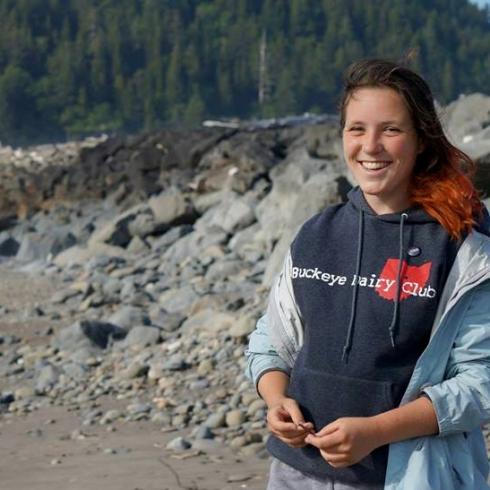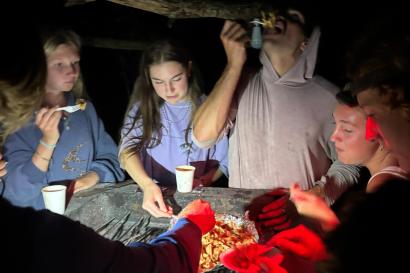When I signed up for a Galápagos botany class, I pictured leafy green things growing out of the ground, but apparently we accept all types of plants. On Friday we took a fieldtrip to Elecgalapagos, San Cristóbal’s power plant where electricity is produced for the island’s 7,000 inhabitants.

The island gets its electricity from 5 diesel generators, but in 2007 three wind turbines were added to the mix. Who provided the necessary $10 million? The European Union, which also set up a trust fund for the turbines’ maintenance and eventual dismantlement. The project was inspired after an oil tanker, the Jessica, ran aground in front of Puerto Baquerizo Moreno and spilled 175,000 gallons of oil into the bay.

This computer screen summarizes and controls the energy production at any given moment by the three turbines and the five diesel generators.
The tour guide gave us interesting but somewhat contradictory information. He said the island previously used 50,000 gallons of diesel per week, and the wind turbines have reduced the diesel consumption to 20,000 gallons per week. However, he also said that at least one of the generators is always running (with all five running at peak consumption hours), and that wind simply doesn’t blow three months of the year (April to June), so these numbers seem a bit optimistic. He also said San Cristóbal hopes to be fossil-fuel-free by the year 2020 but doesn’t intend to add any turbines or other forms of renewable energy to fill the gap.

The five diesel generators.
We rode a bus up the mountain to see the turbines themselves, but the highlands are so foggy we could barely see the blade of the turbine we were standing directly under. Luckily, I returned the next weekend on an unbelievably clear day to see the turbines in their entirety.

Me standing at the base of a wind turbine in the fog.

The three turbines as seen from El Junco on a rare sunny day.
Before going home, we got back to those leafy green plants and took a sopping-wet hike through a cattle ranch called Finca Pampa Mía. The owner has done a lot of work to promote miconia, the endemic shrub which used to dominate this vegetation zone, but invasive guava is still taking a serious toll on the flora.
Here are a few of the lovely plants we found.

Hill raspberry, the most invasive plant in the Galápagos.

Ferns and moss smother an invasive guava tree.

Miconia, the endemic shrub which used to dominate this zone.

Cattle and feral horses graze among the vegetation.

The white-cheeked pintail, an endemic subspecies.

The reservoir from which Puerto Baquerizo Moreno (the capitol of the Galápagos) gets its unfiltered drinking water.

Terrestrial epiphytic algae, who knew?!

An endemic red water fern floating on a pond’s surface.

Nina Finley
<p><span style="color: rgb(29, 29, 29); font-family: Arial, Verdana, sans-serif; font-size: 12px; line-height: normal; background-color: rgb(237, 237, 237);">Nina Finley is a sophomore at The Ohio State University. She ventured to the Midwest from her hometown of Seattle, Washington to major in Animal Sciences and Evolution & Ecology. She would like to become a livestock vet or marine biologist. When she’s not studying, Nina loves to play ultimate frisbee, watch birds and raise meat rabbits. She’s passionate about agriculture, nature and Spanish, all of which she hopes to explore in Ecuador. Join the journey as Nina traces Darwin’s path and explores the natural wonders of the Galapagos Islands!</span></p>







